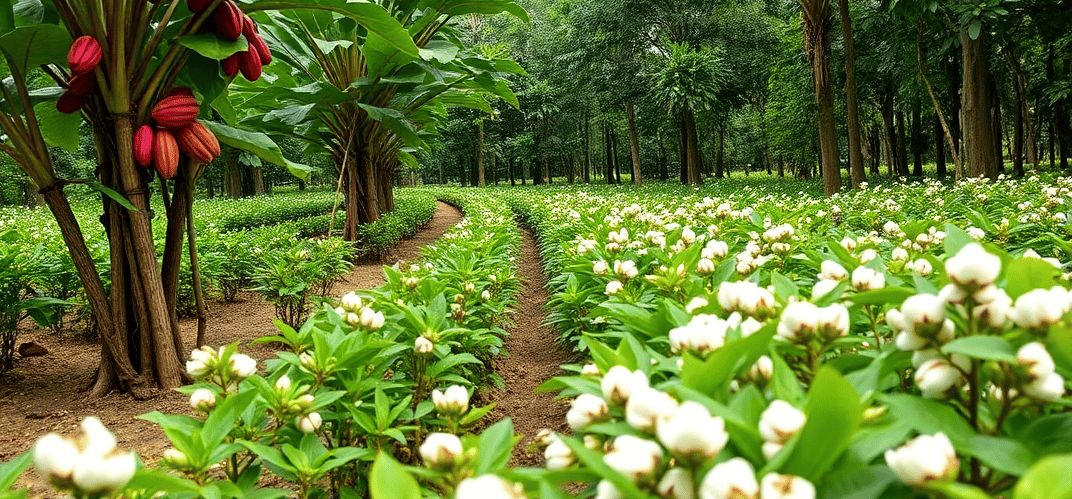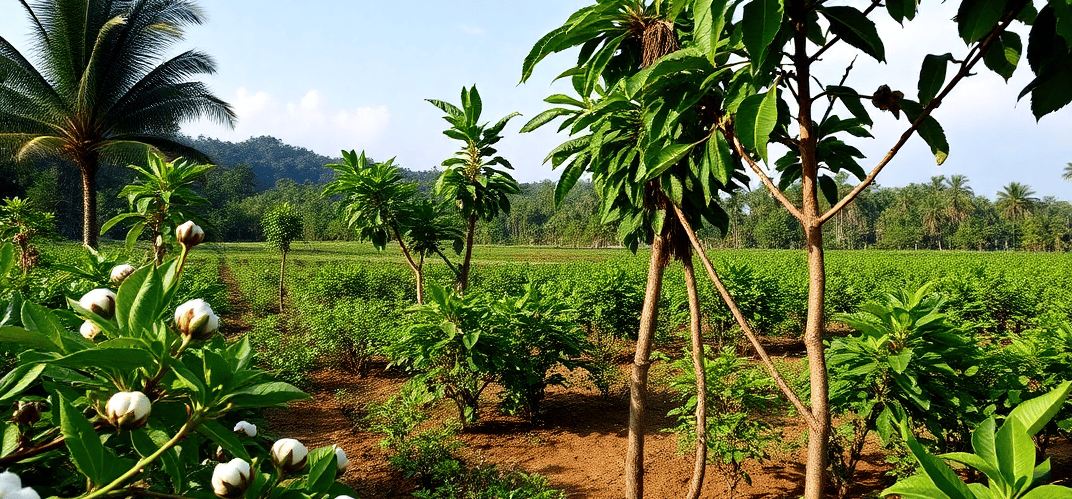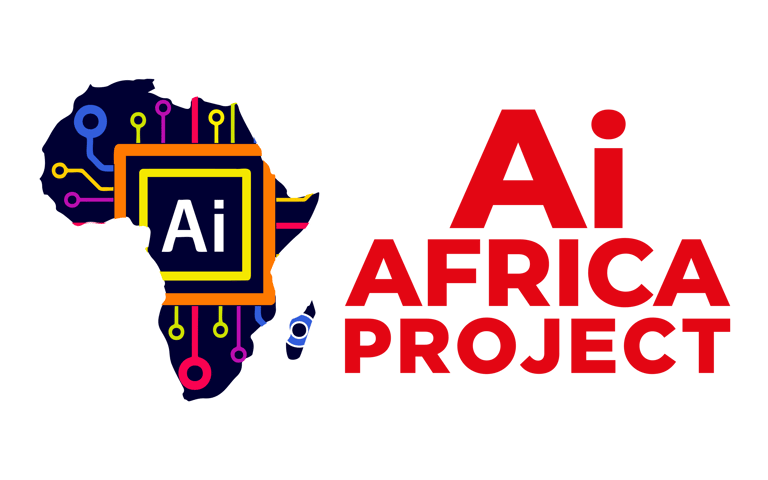Research Case 2: Cash Crop Farming (Cocoa, Coffee, Tea, Cotton)
Explore the vital role of cocoa, coffee, tea, and cotton in Africa's economy and livelihoods.


1. Sector Description
Cash crop farming involves the cultivation of crops primarily for sale rather than subsistence. In Africa, cocoa, coffee, tea, and cotton are among the most vital exports, contributing significantly to foreign exchange earnings and rural livelihoods. These crops are often grown in specific ecological zones and are highly sensitive to climate variability and market fluctuations.
2. Countries with Significant Resources
Cocoa: Côte d’Ivoire (world’s largest producer), Ghana (second-largest), Nigeria, Cameroon.
Coffee: Ethiopia (origin of Arabica coffee), Uganda, Kenya, Rwanda, Burundi, Tanzania.
Tea: Kenya (leading exporter in Africa), Malawi, Rwanda, Zimbabwe.
Cotton: Mali, Burkina Faso, Benin, Egypt, Chad, Sudan.
3. AiAfrica Research Focus and AI Applications
The AiAfrica Research Lab on Cash Crops is developing scalable AI solutions to enhance yield quality, traceability, and market forecasting in cocoa, coffee, tea, and cotton value chains. Current research efforts include:
AI-powered Climate Risk Models for crop-specific vulnerability mapping to mitigate yield shocks due to drought, pests, or diseases.
Image Recognition Models for early detection of black pod disease in cocoa and leaf rust in coffee.
Blockchain-integrated AI Systems for traceability and fair trade verification using AI audit trails and geotagged harvest data.
AI-based Cotton Quality Grading Tools that use computer vision to classify cotton fiber length and uniformity for premium pricing.
The research teams have established working partnerships with cocoa cooperatives in Ghana and Côte d’Ivoire, coffee farmers in Ethiopia and Uganda, and tea estates in Kenya to develop and test AI models in real-world environments.
4. Proof of Value and Potential Impact
In Ghana’s Ashanti Region, AI detection of black pod disease achieved 92% accuracy, helping prevent yield losses valued at over GHS 2 million across 300 farms.
In Ethiopia’s Sidama region, a pilot AI pricing prediction tool reduced market exploitation of coffee farmers by enabling real-time digital price comparisons, increasing average earnings by 18%.
In Kenya, a partnership with a tea exporter resulted in 30% more efficient sorting of premium tea leaves using computer vision models, raising export earnings.
In Mali, AI-supported crop advisory systems helped smallholder cotton farmers improve input application efficiency, leading to a 12% increase in lint quality.
5. Eligibility to Join the Research Lab
Researchers, agronomists, extension officers, and technologists working in cash crop value chains may join this lab if:
They have successfully completed the AiAfrica Project training in either Agritech AI, Environmental AI, or Prompt Engineering.
They demonstrate interest in applying AI to supply chain transparency, crop quality improvement, or climate adaptation.
Each participant must join a specialist team (Cocoa, Coffee, Tea, or Cotton) and contribute to a research prototype or a peer-reviewed publication.


Join our Team : https://chat.whatsapp.com/BDCozak2iDLDpRgMndsRT6
Empowerment
Training youth and women for digital leadership.
CALL / WHATSAPP LINE
+233 559 853 572
© 2025. All rights reserved.
Conclusion: A $6 Trillion Opportunity Powered by AI
A 2023 analysis by the African Development Bank projects that full value chain development across Africa’s natural resource sectors could unlock over $6 trillion in cumulative economic value by 2040. AI will be instrumental in capturing this value through enhanced productivity, precision forecasting, climate resilience, and knowledge transfer.
The AiAfrica Project provides a unique opportunity to position African researchers and innovators at the forefront of this revolution. By establishing dedicated research labs, training centers, and AI deployment strategies across the 50 sectors, Africa can not only leverage its natural wealth but also secure its rightful place in the Fourth and Fifth Industrial Revolutions.
